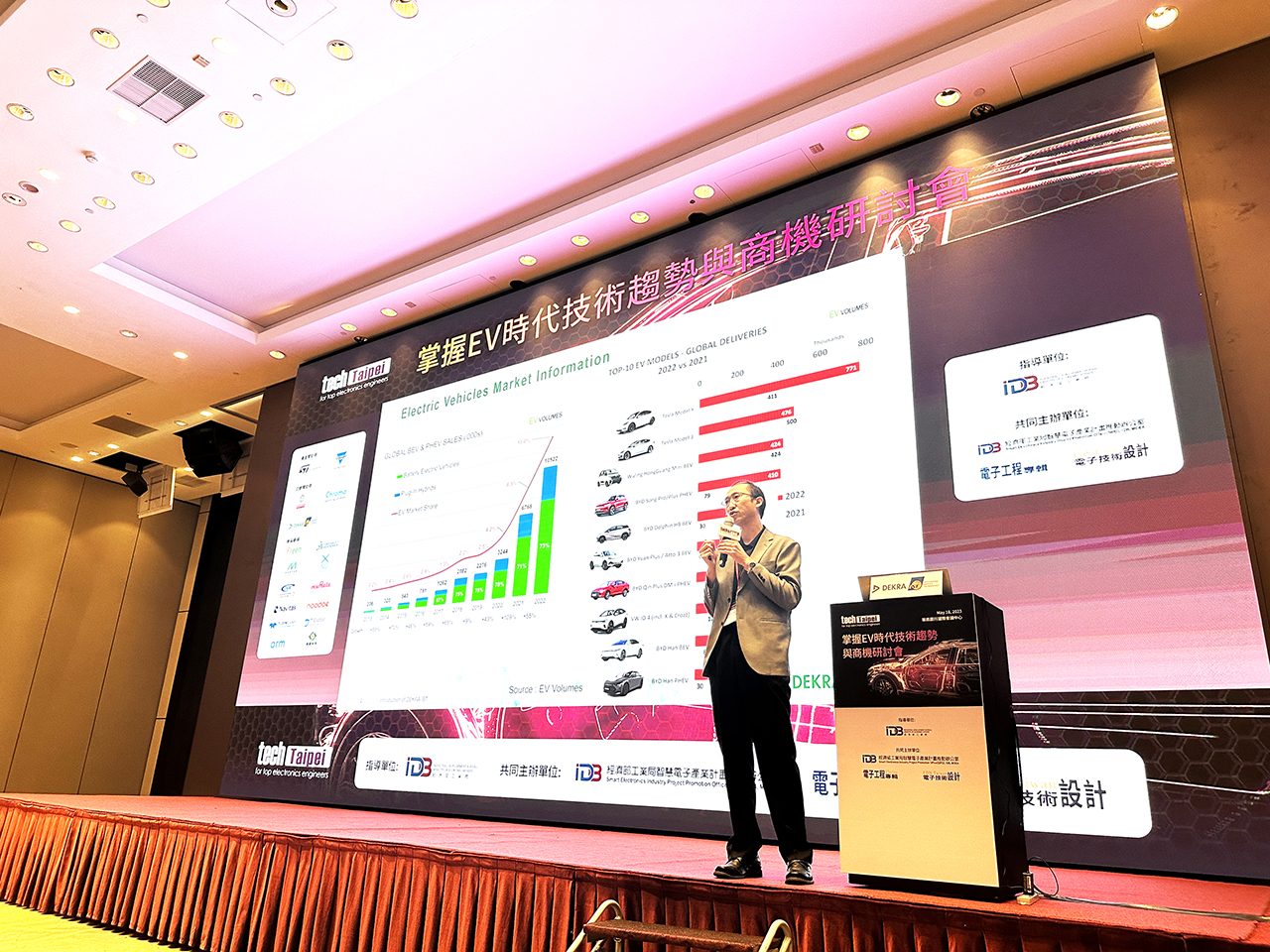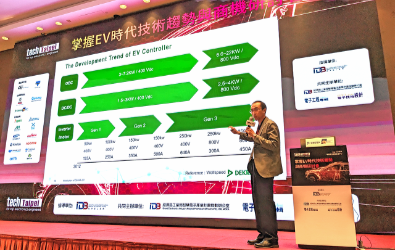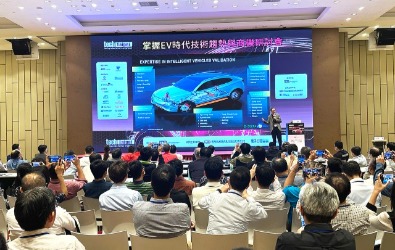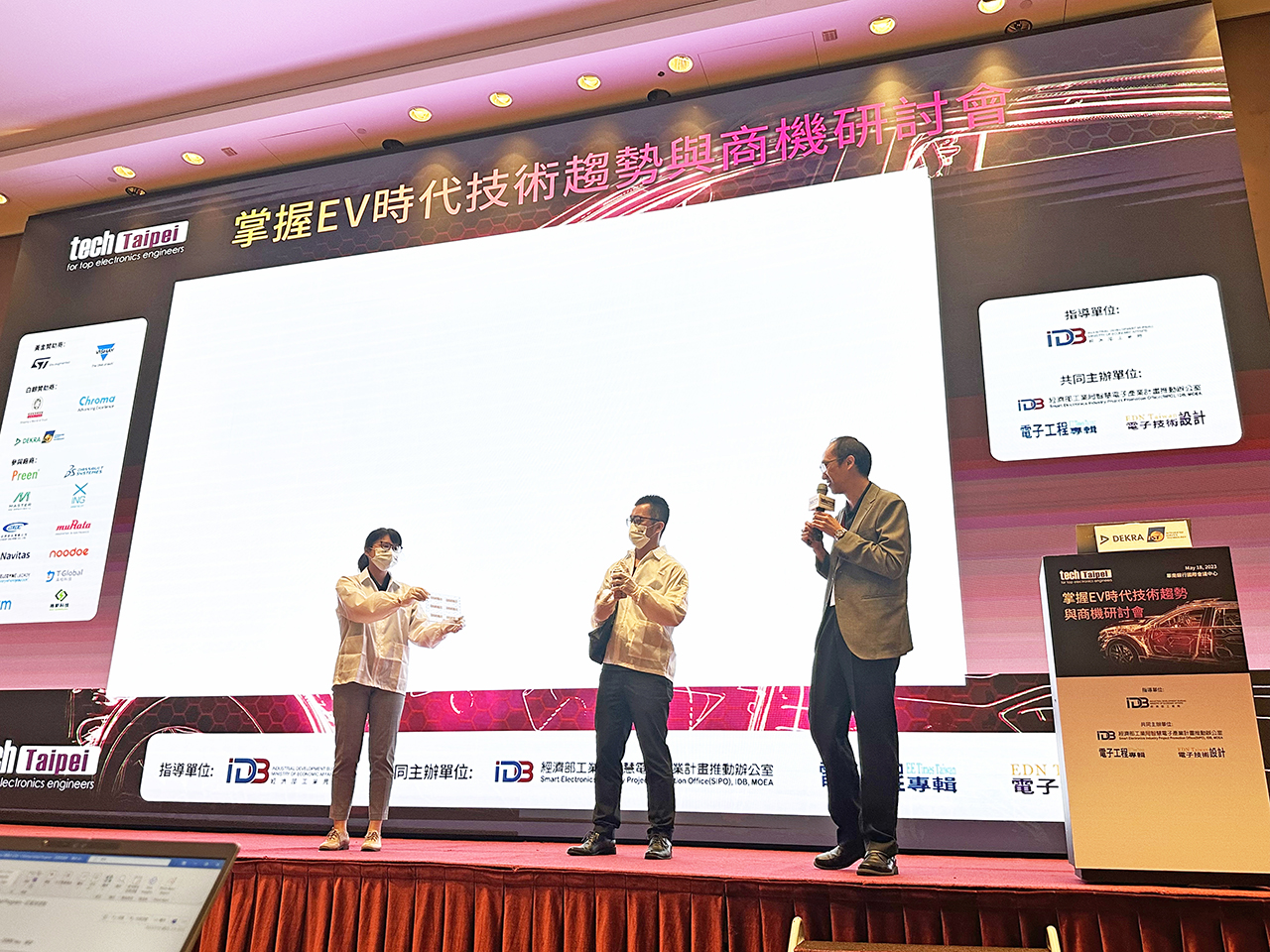The Industrial Bureau, Ministry of Economic Affairs and EETimes together hosted “Tech Taipei: Electric Mobility Future Seminar & Forum” at the HNBK International Convention Center on May 18th. On behalf of DEKRA iST, Director Wangchu Chen was invited to provide the “Overview and Analysis of the Unstoppable Development of the Electric Vehicle Powertrain Industry” from his rich experience in reliability validation. With a higher attendance than expected, the audience gave overwhelming response to and expressed great interest in Director Wangchu Chen’s insights on the electric vehicle powertrain industry.

First and foremost, Director Wangchu Chen pointed out the trends of global car sales. Last year, the sales of electric vehicles exceeded tens of million units, which marked an indicative sale trend in recent years. In addition to the certain market share occupied by several successful electric car manufacturers, what is also worth noticing is Mini BEV as one of the appealing options for consumers. Currently, the main considerations for an electric vehicle include environmental protection, low cost, low sounds while driving, brand, and advanced technology. Some automotive makers specialize in self-driving features to draw consumers’ attention.

Director Wangchu Chen shared his perspectives from the stem of electric vehicles – charging stations in particular – to explain the strong waves of EV development. A charging station is a battery charger for electric vehicles. Different models of electric vehicles should work with their corresponding chargers. There are AC slow chargers and DC fast chargers in terms of specification. When the power of a charging station reaches over 250KW, the amount of current passing increases at the high-power level. This may cause high heat in the charging wires, so the implementation of a water cooling mechanism is required to effectively control the heat.



Director Wangchu Chen even turned the venue into a laboratory. With the help of two professional engineers, they performed a resistance to chemicals test for the audience to experience the testing process in person. Through explanation while doing, the audience understood how and why a test is conducted as well as what the requirements are from car manufacturers. DEKRA iST’s laboratories have long accumulated testing experience in EV Powertrain; thus, optimal recommendations are always available in the face of adversity.

Last but not least, Director Wangchu Chen highlighted six development trends of electric vehicles:
- High Voltage: Voltage as high as 800V will become the mainstream of EV components.
- Bi-direction: Both on-board chargers and charging stations are edging toward bi-direction.
- AC/ DC Charging Stations: An electric vehicle will become an energy-saving carrier. Electricity transfer could be done through V2X technology, namely V2V, V2H, or V2L, so resources can be utilized more effectively.
- All in One: The demands for compact, light electric cars will drive the popularization of all-in-one products.
- Hairpin Motor: The new introduction of motor will enhance efficiency and reduce cost.
- Water Cooling: The subsequent issue of running high-power parts and components is high heat. A water cooling system should be in place to effectively control the heat energy.
The expert team of DEKRA iST was also offering professional consulting services on site and exploring different validation items of EV parts and components with the guests. DEKRA iST looks forward to creating high-quality, highly competitive product with all the experienced industry players, securing the niche market of electric vehicles.

DEKRA iST consultant team provided professional advice in the forum.

DEKRA iST prepared exclusive gifts for the questionnaire.

To make all your PROBLEMS SOLVED, we provide professional consultant and service.
For more information or service, please feel free to email to 📧 sos@dekra-ist.com




